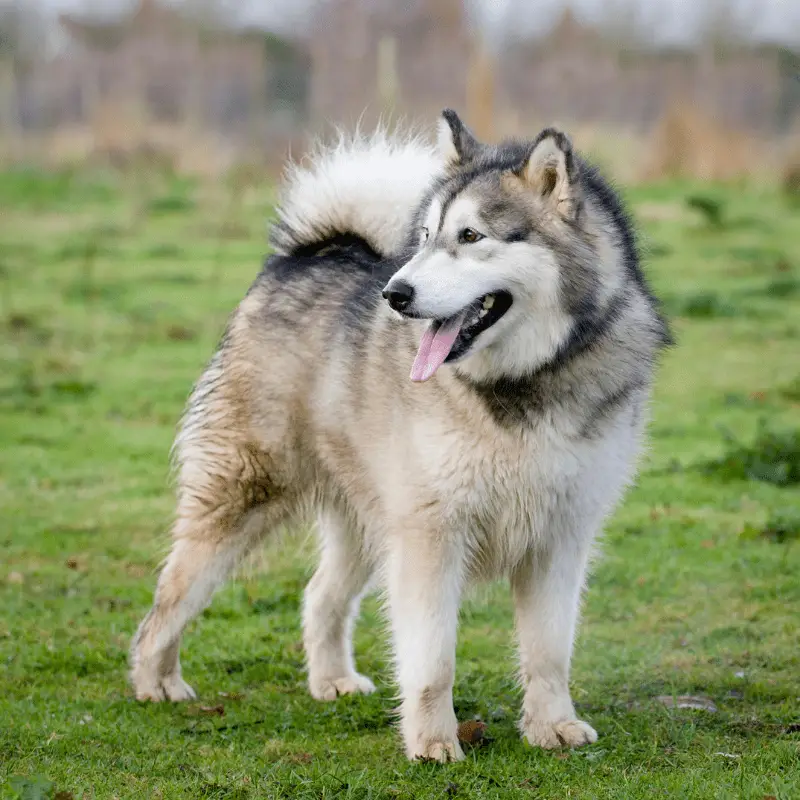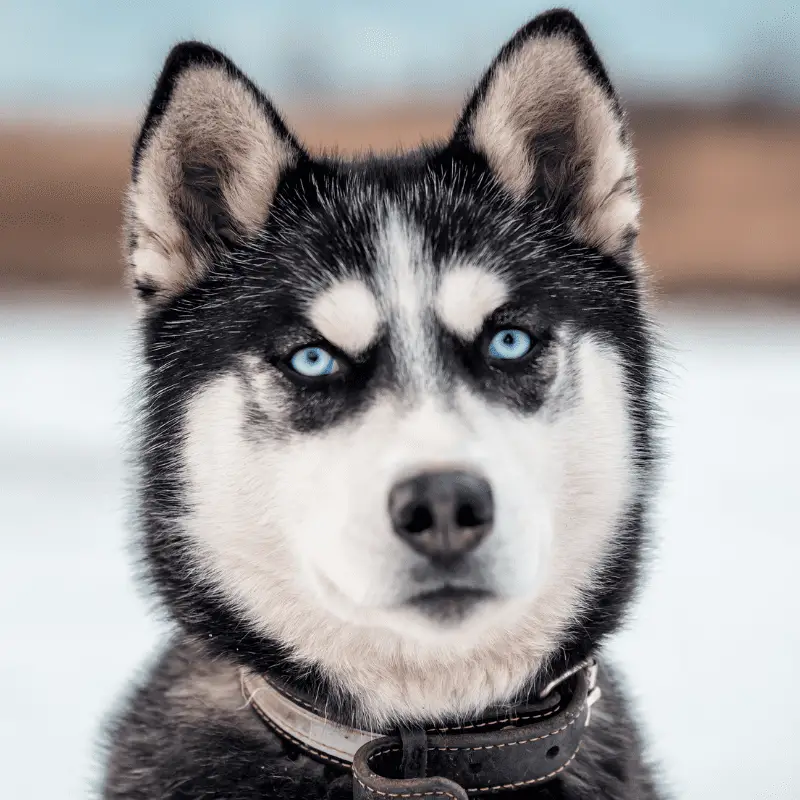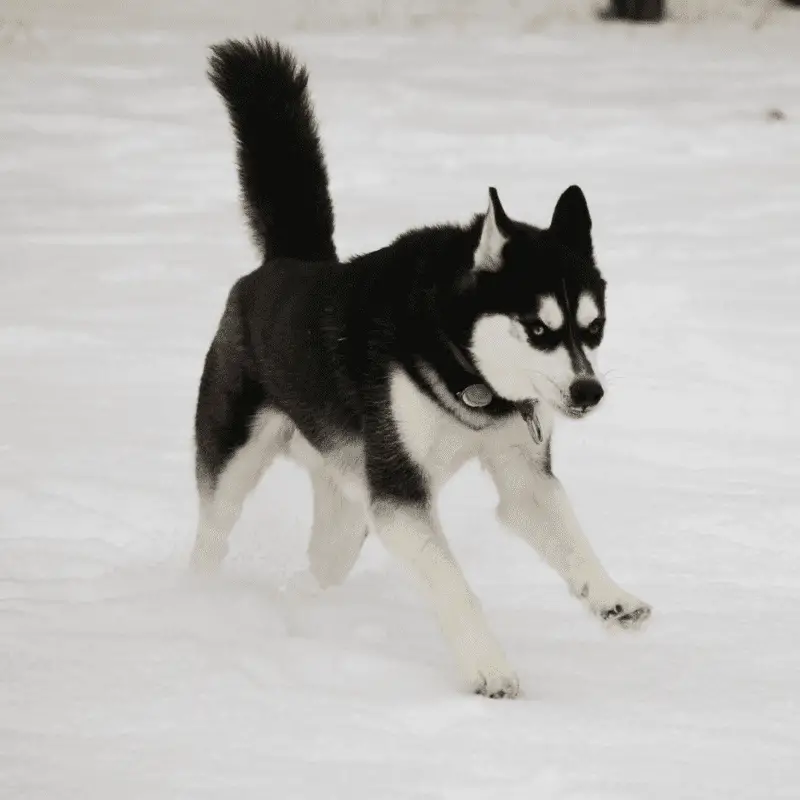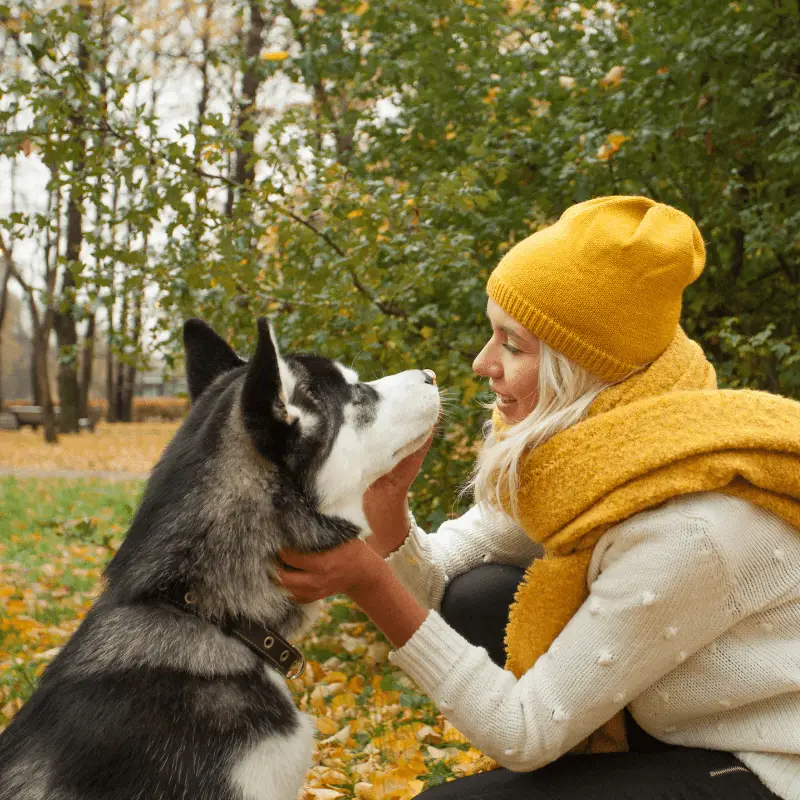Thanks to their striking appearance, the Siberian Huskies have been able to catch the attention of dog lovers across the world for years. These dogs are energetic, athletic and come with coats of dramatic colours. The blue eyes of some of the huskies never fail to charm canine lovers. Their intelligence and outgoing nature make the huskies one of the best partners for active play and outdoor adventures.
Handling the huskies can be a bit challenging for novice dog owners. Even though the huskies exude an image of calmness, these dogs can get hyper if not appropriately handled.
Starting from their exercise regime, food habits, and unique and colourful personalities, a husky owner needs to properly understand many things to care for these dogs.
With the proper training and attention, the huskies can become one of the best canine companions you can ever have. The breed also gets along well with children and other pets of the household, as long as the dog is socialised and trained correctly.
Breed Overview:
- Group: Working
- Life Expectancy: 12 to 15 years.
- Height: 20 to 23.5 inches at the shoulder. Males are taller than females.
Appearance
Just like other spitz-type dogs, the Siberian Husky bears a striking resemblance to its world ancestors. However, the face of the husky is shorter compared to the wolf. Instead, these dogs have more flight features. Their erect triangular ears give these dogs the intelligent and alert expression they are so famous for. The eyes of these dogs are almond-shaped and come in ice blue, muddy brown, or particoloured. Their solid and stout body reflects the balance of endurance, speed, and power in these dogs. Even though they have a muscular build, the huskies do not look too bulky or too light. The gait of the young and healthy huskies is effortless, smooth, and regal. The colourful coats give each of the huskies a unique look.
Coat of the Huskies
Being a dog breed in the Alaskan region, Siberian Huskies have a unique coat. While most of the dogs have only one coat, the huskies come with two. They are the topcoat and the undercoat. Each of these layers has a vital function, which helps protect these dogs’ sensitive skin. The double coat also helps them regulate their body temperature according to the changing weather. If you happen to see a Husky with only one coat of fur, it either just shredded the fluffy undercoat or is not truly a Husky.
Top Coat
This coat is made of thick and long guard hairs that offer protection to the undercoat and the skin. The topcoat of the huskies repels water, and during the cold season, it helps trap the heat. In the warm weather, the thick hairs of the topcoat allow the sensitive skin of these dogs to breathe naturally. It blocks the harmful UV rays of the sun and keeps the dog away from skin troubles. The topcoat hair of these dogs is straight and not curly. Huskies shed their topcoat gradually throughout the year.
Undercoat
The undercoat of these dogs contains a downy, soft layer of fur that offers protection during cold weather. The fine hairs of this undercoat are slightly curly, which helps the dogs trap the warm air during the cold weather. Unlike the topcoat, the fur of the undercoat is thick and full. Siberian Huskies shed their undercoats twice each year.
When do huskies shed their undercoat?
The spring and the fall are their normal shedding time. These dogs keep on shedding the undercoat in clumps over 2 to 3 weeks. During the summer months, the undercoat becomes extremely thin and almost non-existent. On the other hand, in the winter months, this undercoat becomes fluffy and very thick.
- Spring and Fall
Woolly Coat
Even though not all dogs have them, some Siberian Huskies have woolly coats. It is, no doubt, a double quote. But the guard hair of the family coat is longer than the regular ones. While this coat may seem attractive to dog owners, it is not a good sign for the working Siberian Huskies. The woolly coat’s long and soft guard hairs do not offer the protection these dogs require against cold, ice, and water. This coat also takes longer to dry, which creates a threat to the huskies in the cold weather.
Personality
Every Husky owner knows how independent the dogs can become from time to time. It can pose a significant challenge to the ingenuity of the owners as well. The predatory instincts of these dogs are solid. These dogs can be mischievous with a keen drive for adventure.
All of these qualities can be interesting for the human owners of these dogs. You can make your dogs do great things if you can harness all these energy and qualities properly. However, these qualities of the dogs can also get out of their hands pretty quickly. That can lead huskies to showcase restless or destructive behaviour. Physical and mental stimulation is essential when it comes to the husky dog breed.
That is why the owners of these dogs need to understand the importance of fostering a healthy lifestyle that suits this breed perfectly. Their routine should involve a lot of exercises, social and mental stimulation, and playtime. If these dogs get appropriate care, these dogs can mix with a family wonderfully and act like a happy family dog.
However, if not trained and socialised correctly, the behaviour of the huskies can get very challenging. That can include digging, chewing, carrying, and destroying objects, showing strong prey instinct around other smaller animals, escaping, and separation anxiety. It is widespread for the huskies to bring small dead animals, like mice, frogs, or squirrels, as gifts to their human companions.
Family Friendly
Despite their reputation, the Huskies are one of the most family-oriented dogs. These dogs are pack animals and consider the members of the family as their pack. So much so, the huskies think of the area surrounding their homes as their territory. That is one of the reasons why these dogs escape from their homes so frequently.
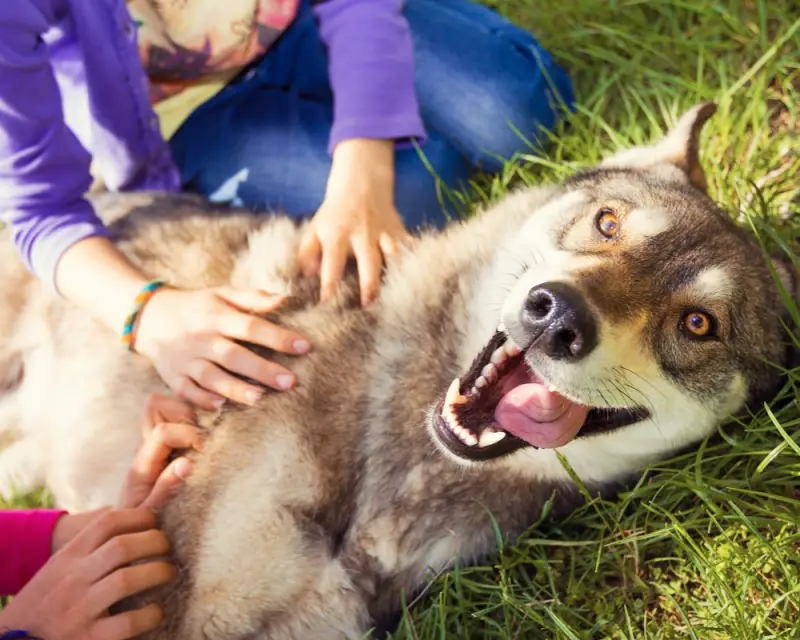
Intelligence
These dogs are extremely intelligent and have a knack to figure things out on their own. They crave mental stimulation. If you do not give it to them, they will create mental exercise for themselves, which may not be a pleasant experience for the owners. When they show their intelligence in unwanted ways, owners often misunderstand their dogs and tag them as bad dogs.
Exercise
Huskies were bred for pulling a sledge in bitterly cold weather all through the day. That means they are built to do hard work. If your dog does not have enough exercise every day, it can become get hyper and start showing destructive behaviour.
Make sure to provide your husky with at least an hour of extensive exercise. Along with being diggers, the huskies are also great pullers. Untrained huskies do not walk nicely on a leash.
Amount
- At least an hour of extensive exercise a day.
Even with the trained Huskies, it is challenging to walk them on a leash. Even the most skilled husky owners prefer to use a hip belt while walking their dogs. However, it is vital to keep in mind that not all dogs are the same. Some dogs thrive off the leash as well. So, it is crucial to observe your dog and find out what he likes the best.
Shedding
Each one of Siberian Huskies shed. Most dogs shed their undercoats two times each year. The shedding generally starts before the significant seasonal changes. That means most huskies shed their undercoat during spring, when cold weather surpasses, and during fall when the cold wind starts to blow.
- Twice a year
The huskies keep on shedding the topcoat throughout the year. If you want to control the shedding, you need to brush your Siberian Husky daily during the shedding season. Otherwise, brushing your huskies once a week is enough to control the shedding.
It is always best to equip yourself with the necessary cleaning and vacuuming tools if you are planning to bring a Husky home.
Temperament
When it comes to Siberian Huskies, looks can be highly deceiving. Despite their strong resemblance to their ancestor, the wolves, huskies generally have a friendly temperament. They can be wonderful companions and one of the best family dogs. However, huskies are not meant to be guard dogs. In fact, instead of raising the alarm, a Siberian Husky generally gets excited when they meet strangers. They wag their tails and greet them with enthusiasm.
Huskies are curious and affectionate dogs. As they were bred for pulling sledges, the huskies love to pull and run.
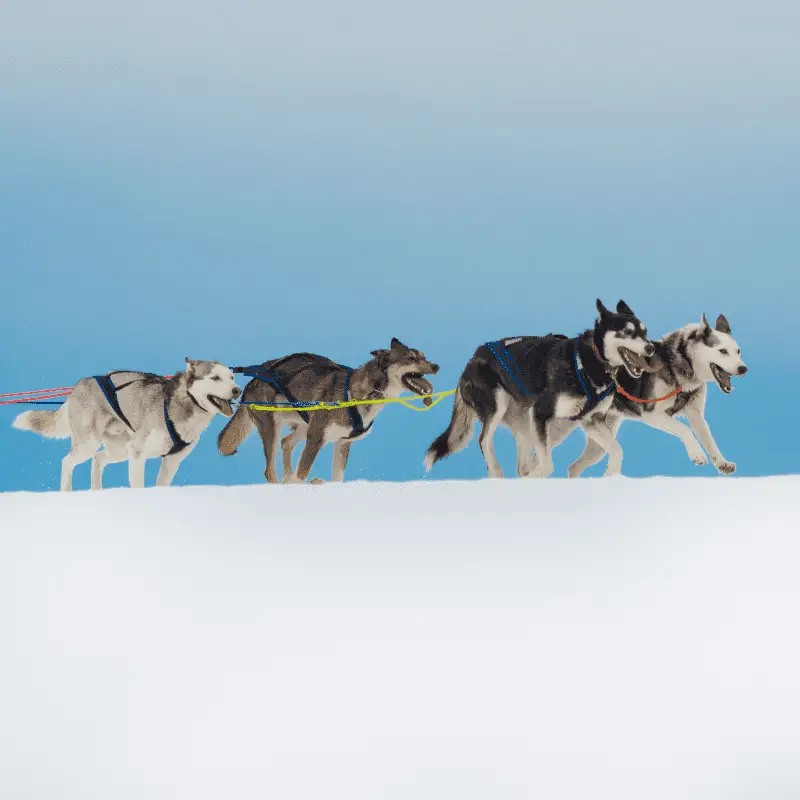
To lead a healthy and happy life, huskies require a lot of exercises. If proper training is not offered to them, the huskies can become quite a terror fast.
Untrained huskies are known for destroying furniture, digging holes in the yard, or doing anything else that helps them to release excessive energy.
These destructive behaviours are mostly observed when the dogs are still in the puppy phase or when the dogs are left untrained.
As you may already know, these dogs also have a strong predatory inclination. It is in their nature to attack smaller animals, like rabbits, squirrels, birds, and even cats. If you are thinking about keeping a husky and a cat together, then make sure to socialise these animals since they are tiny. If you raise your Siberian Husky puppy with the cat, these two animals can live in the same home together. However, introducing a cat to an adult husky may prove difficult.
Barking
Even though barking is a classic trait among dogs, huskies don’t bark as much. These dogs can sometimes bark as an invitation to play. Otherwise, they rarely bark. That does not mean huskies are quiet dogs. They are very talkative and love to howl, woo, and bay to express themselves.
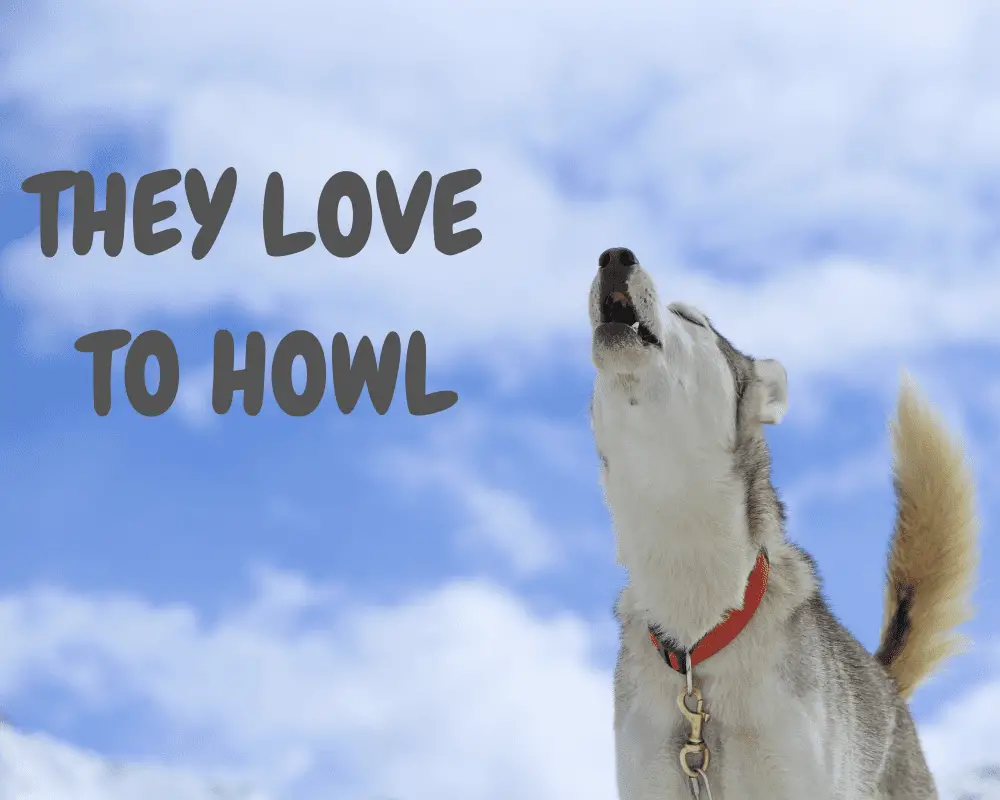
Having said that, if your husky is barking, then understand that there must be some underlying cause. The main reasons for which huskies bark are; protection of owners and territory, excitement, fear, pain, and boredom. If your Husky starts to bark suddenly, try to consider the situation and the place to find out the root cause.
The best way to stop your dog from barking is to remove the cause in the first place. You can prevent the barking scenario from occurring by training your husky from an early age. Sometimes, using treats to get it to pay attention to you instead of the stimulus making them nervous.
Diet
The Siberian Huskies were bred to run maximum distance on minimum food. The modern huskies have retained this trait. As companion animals, they are still known for their small appetite compared to their size and activity level. These high endurance dogs thrive on high-quality dog food made from fresh ingredients. Food allergies can cause skin problems in these dogs.
To diagnose and treat these issues:
- Try a diet elimination process first.
- Offer your pet a cup of dry dog food twice a day. Your dog’s food and nutrition requirements will depend on its size, age, activity level, and other related factors.
- Check the weight of your dog regularly to avoid problems like obesity.
- Get in touch with a professional vet to discuss the nutritional requirements of your dog.
Diseases
Like most dogs, Siberian Huskies also suffer from predisposition to certain diseases and health issues. But with reasonable care, they can live a long, healthy, and happy life. The health issues that most huskies face are depicted below.
Cancer
Most huskies are very susceptible to cancer. Most of them develop sebaceous gland tumours, basal cell tumours, a type of sarcoma in capillaries. They are also very sensitive to anal gland tumours, the chances of developing, which can be reduced by neutering the dogs.
Degenerative myelopathy
It is a progressive neurological problem that can first show up as weakened rear legs. There is no cure for this disease. But various treatments can help to reduce the impact of this disease.
Eye problems
Glaucoma, cataracts, progressive retinal atrophy, corneal and dystrophy are the most common eye diseases that you should look out for. Most huskies are prone to develop heterochromia, the reason behind the two different eye colours of the dogs. This trait does not pose any danger to the eye health of these huskies.
Inflammatory Bowel Disease
Inflammatory bowel disease is one of the most common problems of Siberian Husky. Changes in diet and stress can lead to this problem and sometimes accelerate the symptoms as well. By managing the diet of your dog carefully, you can alleviate the symptoms.
Skin Problems
The huskies often suffer from several skin-related issues, including pemphigus foliaceous, zinc responsive and dermatosis. All of these can lead to crusty, dry, irritated skin and can cause infection. The skin problems can be treated through dietary supplements prescribed by an experienced vet.
Where do Siberian Huskies come from?
Origin: Serbia
History
The Husky breed originated in the North Eastern area of Siberia. That is why these dogs are called Siberian Huskies. These dogs are also known as Chukchi sledge dogs. The name came from the Eskimo tribe that used to breed these dogs for pulling their sledge and helping them hunt animals. The people of the Chukchi tribe led an isolated life and were bred only from the best sledge dogs. That is why the gene pool of the huskies remained untampered for hundreds of years. As these dogs lived closely alongside these tribesmen, the Chukchi people also concentrated on the temperament of these dogs. In the Arctic area, the Siberian Husky is still one of the most popular breeds, thanks to their resistance to the cold and endurance. These dogs pull sledges in different Arctic expeditions and take part in events like dogsled racing. They are also popular among canine lovers, who want an outdoorsy and active companion for themselves.

